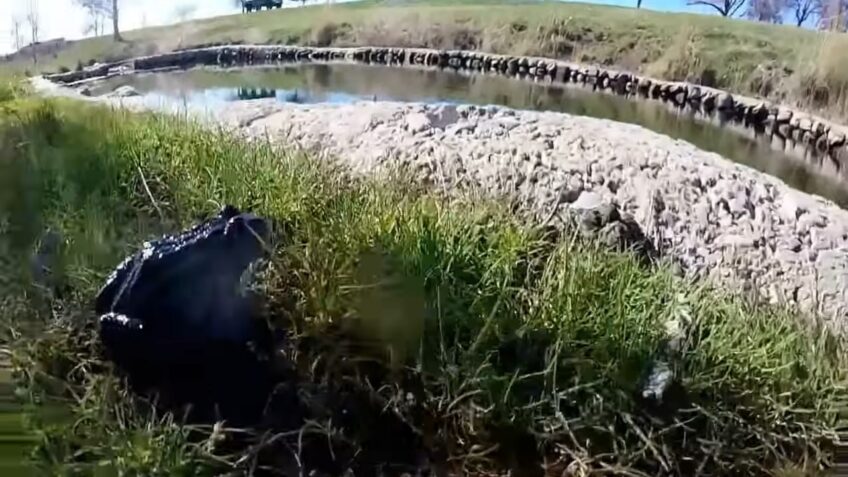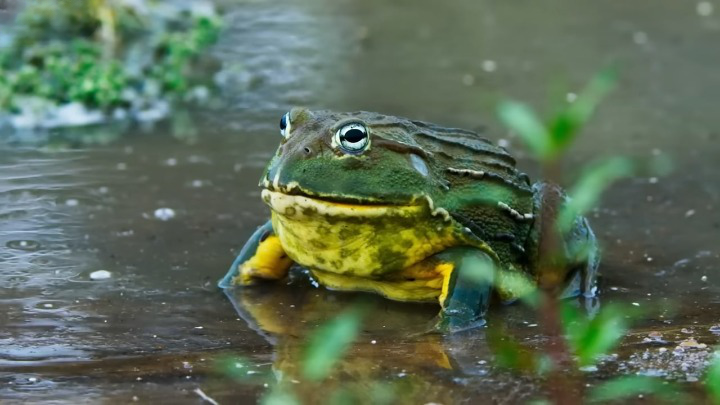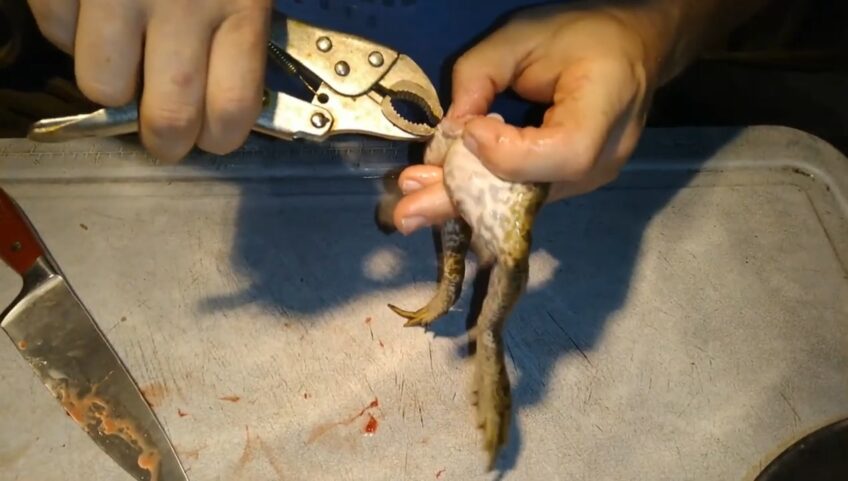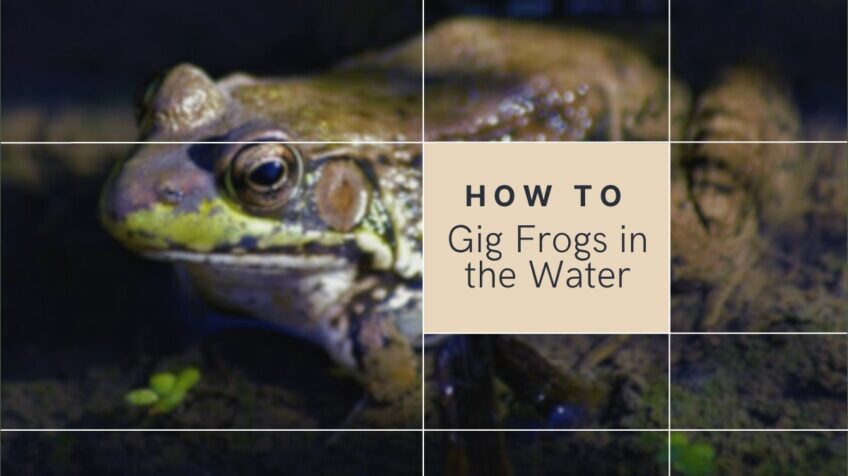Gigging for frogs is a popular outdoor activity that involves hunting frogs in the water using a specialized tool called a gig. This technique requires skill and patience but can be a fun and rewarding experience. In this article, we will explore the essential tools and techniques for successful frog gigging in the water. Whether you are a seasoned hunter or a beginner, this guide will provide you with the knowledge and skills necessary to successfully gig for frogs.
Selecting the Right Equipment
Gigging frogs in the water can be an exciting and rewarding experience, but it is important to select the right equipment to do it safely and effectively.
There are several factors to consider when selecting gear, including the type of boat, the size of the net, and the type of fish you are targeting.
Let’s explore the different types of equipment and what makes them ideal for frog gigging.
Choosing a Gig
Choosing the right gig is crucial when going frogging as it can make or break your success rate. A gig is essentially a spear-like tool used for catching frogs in the water.
Here are a few factors to consider when selecting the right gig for frogging:
Length: A gig should be long enough to give you some distance from the frogs while still being easy to handle.
Tine Count: The more times a gig has, the easier it is to catch a frog. Aim for a gig at least three times.
Tine Length: The tines should be sharp and long enough to penetrate the frog’s skin easily without damaging the meat.
Material: Gigs can be made of various materials, including wood, metal, and fiberglass. Wooden gigs are the most traditional but may not be as durable as other materials.
Handle: Make sure the handle is comfortable and easy to grip, as frog hunting can be tiring.
Selecting the Right Pole
Selecting the right pole is crucial for successful frog gigging in the water. Using the wrong type of pole can negatively affect your accuracy, agility, and mobility.
Consider the following factors when choosing the right pole for your frog gigging excursion:
Length: The ideal pole length would depend on where you are trying to gig; shorter ones, between 6-8 feet, are more useful in a boat or a relatively open area, while long poles, around 16 feet tall, work better on the shoreline or in an area with thicker vegetation.
Material: These poles are typically made from aluminum or fiberglass. Fiberglass poles are lighter and more durable. At the same time, aluminum poles are heavier but are easier to handle, especially when it comes to aiming and stabbing the frog.
Additional features: Specialized features that can enhance your pole include handles made with non-slip materials, adjustable wrist straps, and thread protectors.
Selecting the right pole will help make your frog gigging experience safer and more enjoyable.
Deciding on a Light Source
When deciding on a light source for gigging frogs in the water, there are multiple options to consider that will vary in effectiveness based on the type of environment you are in.
Here are three popular light sources and when they would be most advantageous:
Halogen lights- These lights work best in clear water environments and are the brightest option. They can make it easier to spot larger ones and those that are farther away.
LED lights- LED lights are energy-efficient and perfect for shallow, murky waters. These lights produce less heat and last longer than halogen lights, but you may need to move closer to your target to see it clearly.
Incandescent lights- These are the most affordable option, but they don’t produce as much light as halogen or LED lights. Incandescent lights are best used in muddy and murky waters with smaller frogs.
Remember that different conditions will require different equipment choices. It’s best to experiment with various light sources and see what works best in your specific environment.
Finding the Perfect Spot
When it comes to gigging for frogs, finding the perfect spot is key. Knowing where the frogs usually hang out around the body of water can make all the difference.
There are certain environmental factors to consider – such as the type of vegetation or cover that is available, the abundance of food sources, or the presence of logs or rocks – that can affect the frog population.
In this section, we’ll look at how to identify the best spot for frog gigging.
Identifying Ideal Water Sources
When looking for ideal water sources to go gigging for frogs, there are a few key factors to keep in mind to increase your chances of success.
First, look for areas with standing water such as swamps, ponds, and slow-moving streams. They tend to congregate in calm waters with ample vegetation and a variety of insects for food.
Additionally, check the water’s temperature. They are cold-blooded creatures and prefer warmer water temperatures to be active and visible.
Finally, pay attention to the weather conditions. Clear, warm, and humid nights with little to no wind are the best for frog gigging.
Remember to check with your local wildlife agency for regulations and obtain required permits before heading out gigging in the waters.
Determining Optimal Water Temperatures

When gigging for frogs in the water, it’s important to determine the optimal water temperature for successful catches.
Here are some tips to help you find the perfect spot for frog gigging:
Ideal water temperature: They become more active during a temperature range of 60°F to 80°F. Therefore, the optimal water temperature for frog gigging should be close to this range.
Look for clear water: Clear water is ideal for gigging as it allows you to see them more clearly in the water.
Check for still waters: Stagnant waters are perfect for frog gigging as they tend to attract more frogs due to the abundance of insects.
Check the oxygen levels: Oxygen-rich waters are ideal for frog gigging, as frogs prefer such waters for their breeding and feeding habits.
Timing Your Search
Timing your search is crucial when it comes to gigging for frogs in the water.
The best time to go frog gigging is at night when the frogs are most active and easier to spot. A good time is 30 minutes to an hour after sunset.
It is important to also consider the weather conditions. On clear, warm nights, frogs are more active and easier to catch. On rainy nights, they tend to stay hidden.
Additionally, understanding the seasonal patterns of your local frog population can be helpful. They typically breed in the spring and summer, making those seasons the best time to gig for them.
By taking into account these factors and planning your frog gigging trips accordingly, you can increase your chances of finding the perfect spot for a successful hunt.
Gigs and Techniques for Different Frog Species
Gigging them can be a thrilling and challenging experience and requires the angler to have the patience to be successful. With the right gigs, baits, and techniques, you can have an enjoyable experience when trying to catch frogs.
There are different strategies you can use for different kinds of frogs. Let’s take a look at the best gigs and techniques to use when gigging for frogs.
Bullfrogs

They are a popular species that can be gigged for food or sport. Gigging is the practice of hunting for frogs at night using a gig, a long pole with a sharp-pronged spear at the end.
There are different techniques for gigging them depending on their habitat and behavior. Here are a few:
Still hunting: This technique involves silently wading through shallow water and scanning the surface for the frog’s eyes or movement. Once you’ve spotted a frog, use your gig to spear it quickly and carefully.
Light attraction: This technique involves shining a bright light on the water’s surface to attract the frog toward you. Once it approaches within range, use your gig to spear it.
Bottom bouncing: This technique involves moving your gig along the bottom of the waterbed to attract the frog’s attention. When the frog moves closer to investigate, use your gig to spear it swiftly.
Use caution while gigging, and make sure to follow all legal regulations for frog hunting in your area.
Green Frogs
They are one of the most popular frog species used for gigs, as they are abundant in many parts of the world.
It’s important to use the right techniques and equipment to avoid damaging the frog or harming the environment.
Here are a few tips to consider:
Use a high-quality gig with sharp tines to ensure a clean and humane kill.
Look for them in shallow waters close to the shore, such as ponds, streams, and marshes.
Use a bright flashlight or headlamp to spot the frogs at night, when they are most active.
Approach it carefully, being mindful of its surroundings and avoiding trampling vegetation or disturbing other wildlife.
Aim for the center of the frog’s body with a swift and precise thrust.
Avoid gigging frogs during breeding season or if they are protected by law in your area.
By following these tips, you can safely and responsibly gig for green frogs and other frog species.
Leopard Frogs
They are one of the most common frog species found in North America, and gigging is a popular method of catching them for food or recreation. Here are some tips and techniques for gigging leopard frogs in the water.
The best time to gig leopard frogs is at night when they are most active, and their eyes reflect light, making them easier to locate.
Use a waterproof headlamp to help you spot them in the dark. – Look for shallow, slow-moving water with vegetation, as this is where leopard frogs are most likely to congregate. – Move slowly and quietly through the water, using a gig or a spear to catch the frogs. Aim for the head to ensure a humane and quick kill. – Once you catch a frog, store it in a cool and dry place until you are ready to clean and cook it.
Gigging Best Practices
Gigging them in the water can be a rewarding and exciting experience if done correctly. Learning the right techniques and following the right safety protocols is essential if you want to be successful at gigging.
In this section, we will discuss the best practices for gigging frogs in the water. We will discuss the best times to go, the necessary gear, the proper safety protocols, and more.
Gearing Up and Staying Safe
Gigging for frogs is a popular outdoor activity that requires certain best practices to stay safe and gear up, such as:
Dress for the occasion: Wear clothes suitable for wading in the water, such as waterproof boots, long pants, and a long-sleeved shirt. Bring a hat and gloves to protect yourself from the elements.
Choose the right gigging equipment: Invest in a good-quality gigging spear that is strong, sharp, and has a secure grip. Make sure it is appropriate for the size of the frogs you will be catching.
Use a bright light: It’s best to use a high-quality, waterproof spotlight that is bright enough to spot frogs in the dark.
Work in pairs: Always gig with a partner and keep a safe distance from each other while walking through the water.
Be mindful of hazards: Be aware of your surroundings and avoid areas with fast-moving currents or hidden obstacles such as rocks or logs.
By using these gigging best practices, you can safely enjoy the thrill of catching frogs in the water.
Being Respectful of Wildlife
Being respectful of wildlife is crucial when gigging for frogs in the water. Here are some best practices to follow:
Use a powerful flashlight to spot the frogs in the water, instead of using the gig blindly. This will allow you to avoid accidentally harming other types of wildlife, such as fish or turtles.
Only gig for frogs during their active season when they are abundant, usually between spring and fall. Avoid gigging for frogs during their mating season or when the frog population is in decline.
Use a sharp gig to minimize the risk of hurting the frog unnecessarily. A blunt or dull gig could cause prolonged suffering for the frog.
Once you have caught a frog, humanely kill it using a method that minimizes suffering, such as decapitation or pithing.
Lastly, always follow wildlife regulations and guidelines set forth by local authorities and resist the urge to take more than you need.
Proper Care and Storage of Frogs and Equipment
Proper care and storage of frogs and equipment after gigging is crucial to ensure their quality and freshness. Here are some best practices to follow:
- Keep the frogs alive until ready to clean by placing them in a container filled with cool, clean, and aerated water. Change the water frequently.
- Clean them as soon as possible after gigging. Cut off their heads and skin them.
- Rinse the frog legs thoroughly with cool water to remove any dirt, debris, or blood.
- Store the frog legs in a sealed container, lined with damp paper towels, and stored them in the fridge or freezer until ready to use.
- Clean and disinfect your gigging equipment to prevent the spread of harmful bacteria or diseases.
FAQs

What should I do if I accidentally gig a non-target species while frog gigging?
If a non-target species is accidentally gigged, it should be immediately released unharmed.
Can I eat the frogs I catch while gigging?
Yes, they can be delicious and nutritious meals when properly cleaned and prepared.
How do I clean and prepare the frogs for eating?
To clean and prepare the frogs for eating, remove their skin, legs, and other edible parts, then rinse and season to taste.
Are there any regulations or guidelines I need to follow when frog gigging?
Yes, it is important to follow local hunting regulations and guidelines, obtain the necessary permits and licenses, and respect the environment and wildlife while frog gigging.
Can frog gigging be dangerous?
It can be dangerous if proper safety precautions are not taken, such as wearing appropriate clothing and footwear, using caution around water, and avoiding areas with known risks.
Is frog gigging a sustainable activity?
It can be a sustainable activity when done in a responsible and ethical manner, following local regulations and guidelines and respecting the environment and wildlife.
Conclusion
In conclusion, gigging for frogs in the water can be an exciting and rewarding outdoor activity for hunters of all levels of experience. By following the essential tools and techniques outlined in this guide, you can increase your chances of a successful hunt and prepare a delicious meal with your catch.
Remember to always follow local hunting regulations and guidelines, respect the environment and wildlife, and prioritize safety at all times. With patience, practice, and a love for the outdoors, you can become an expert in the art of frog gigging.

